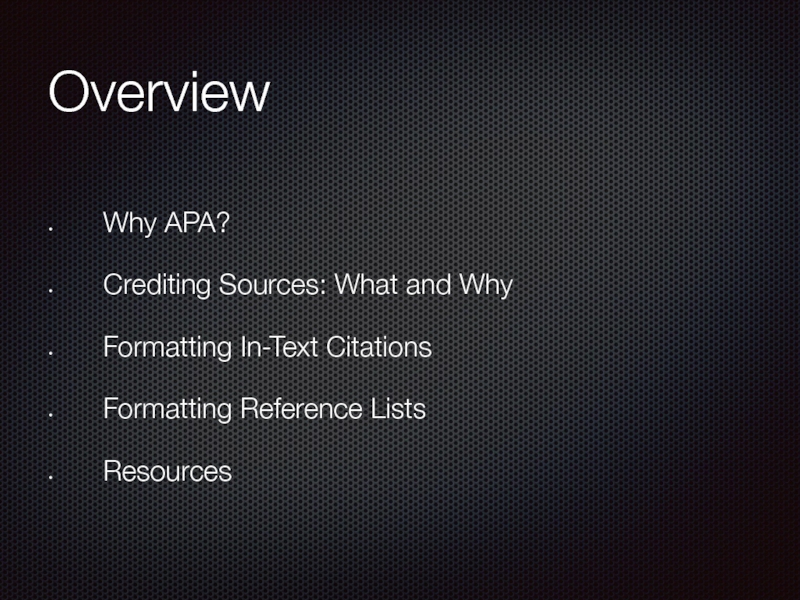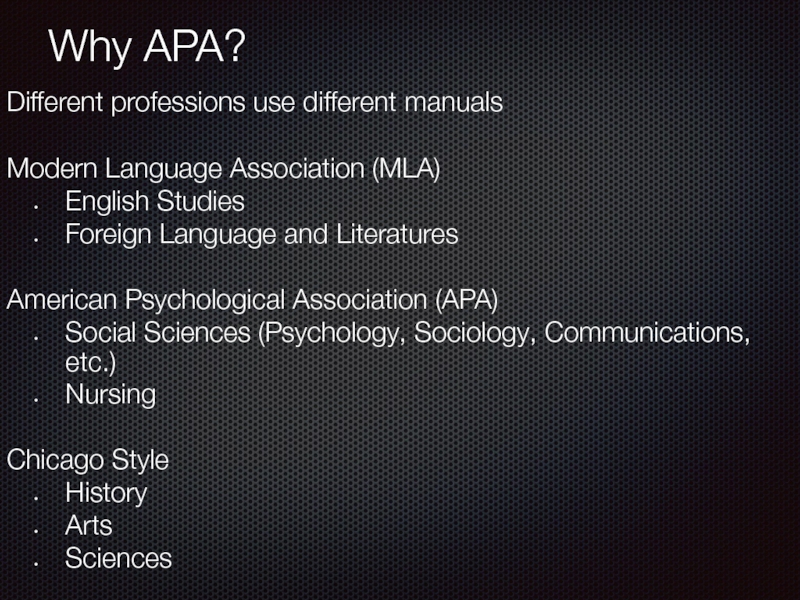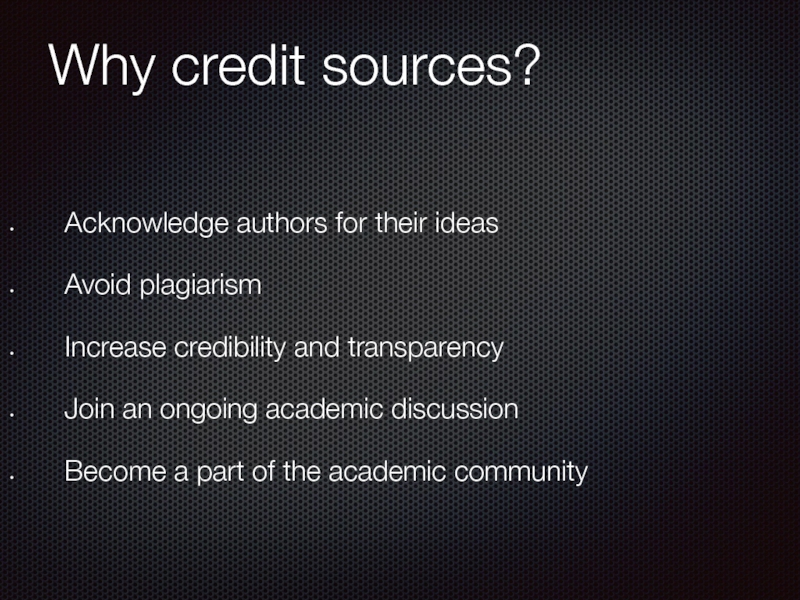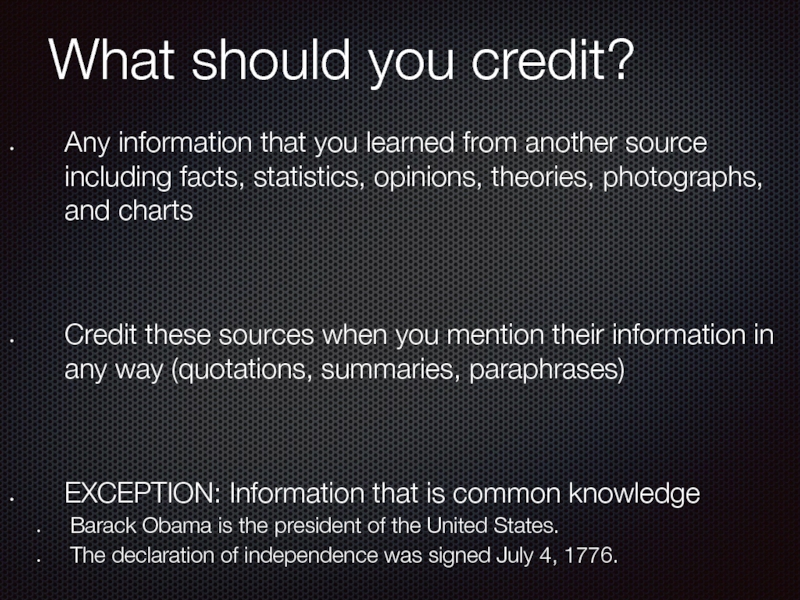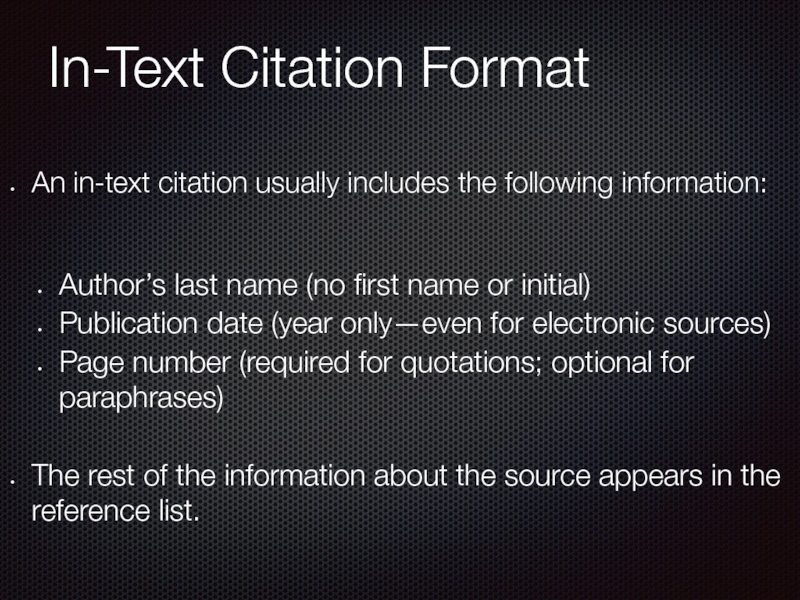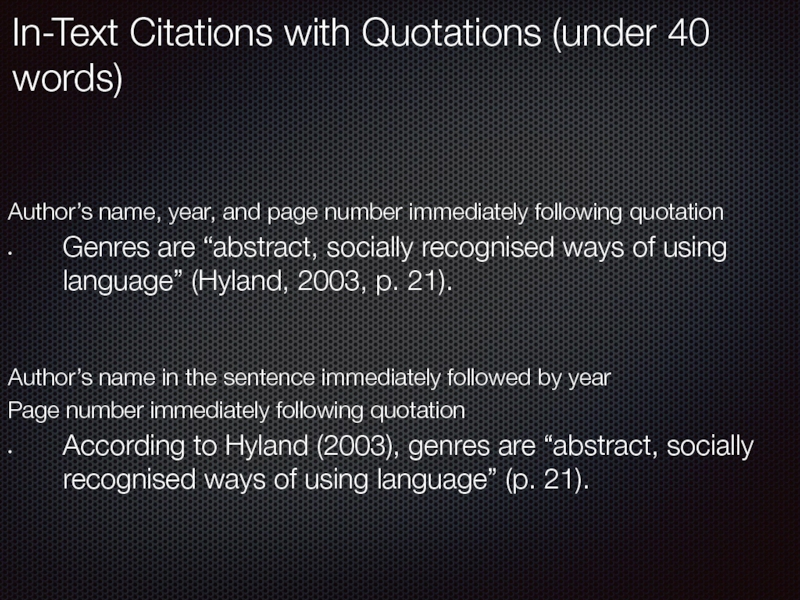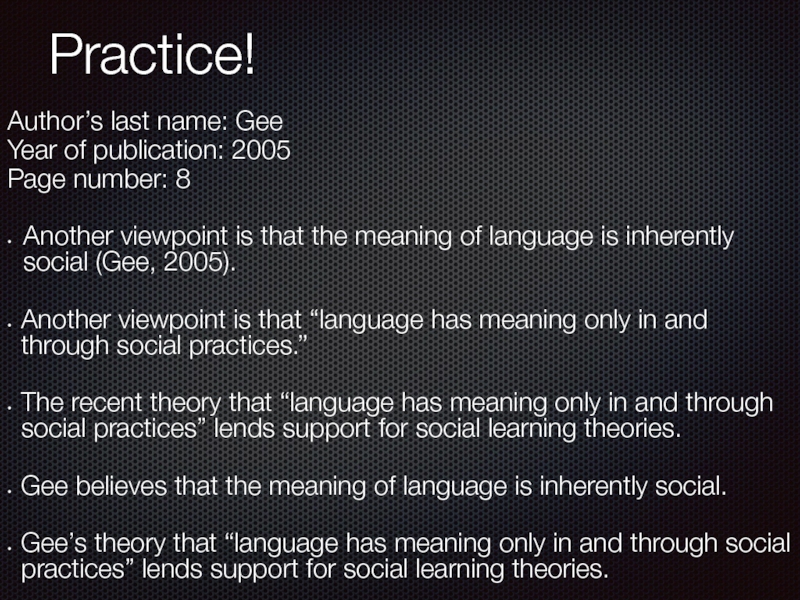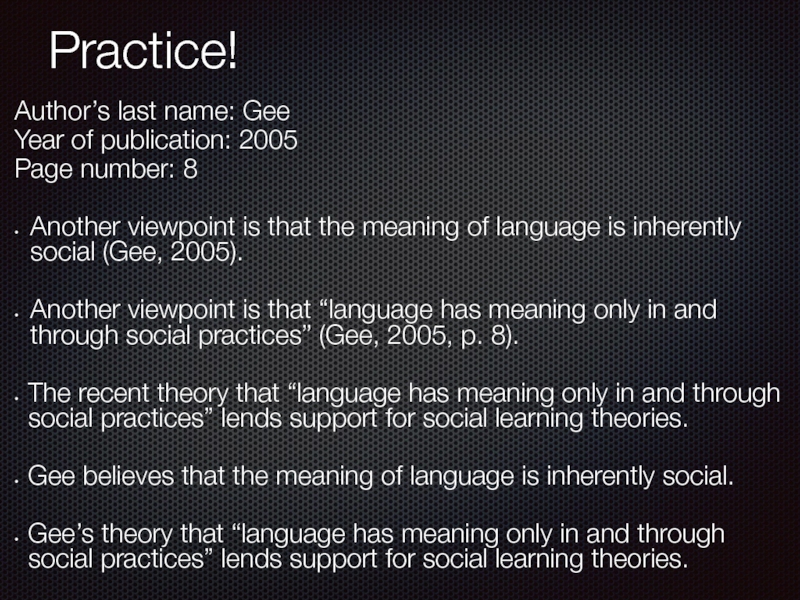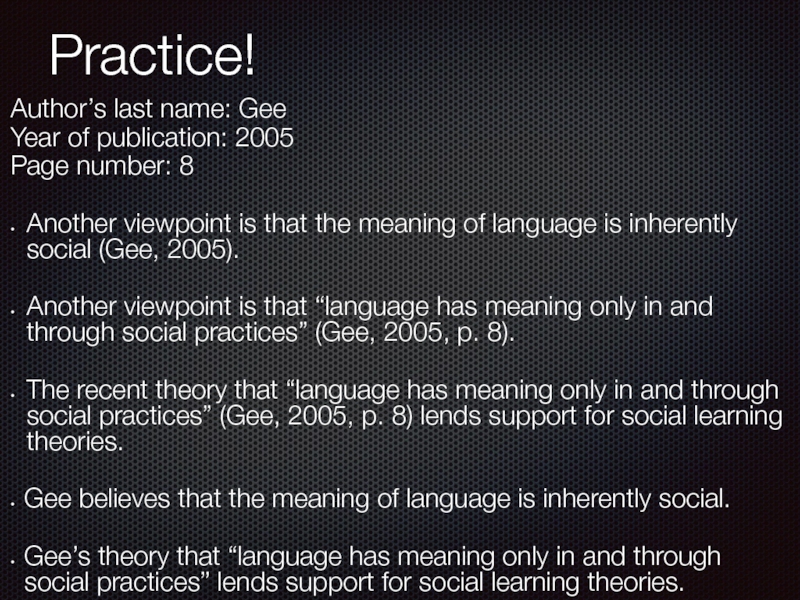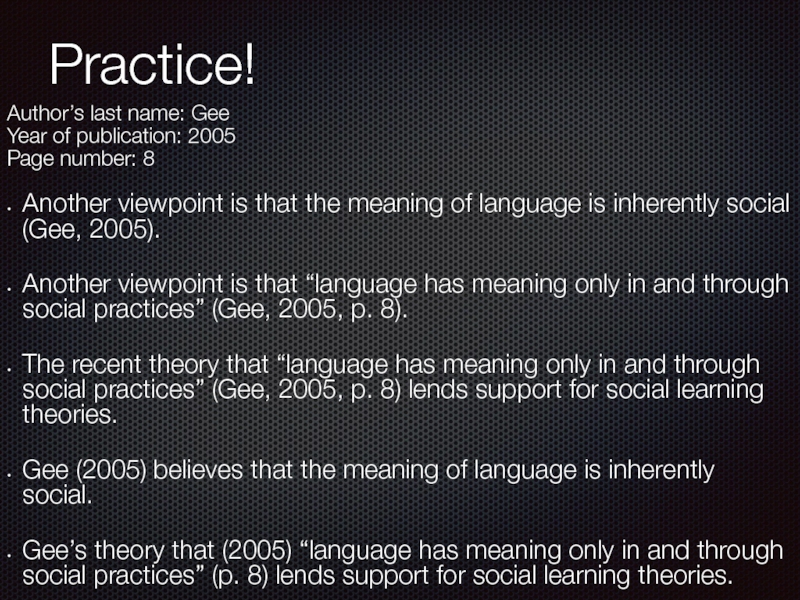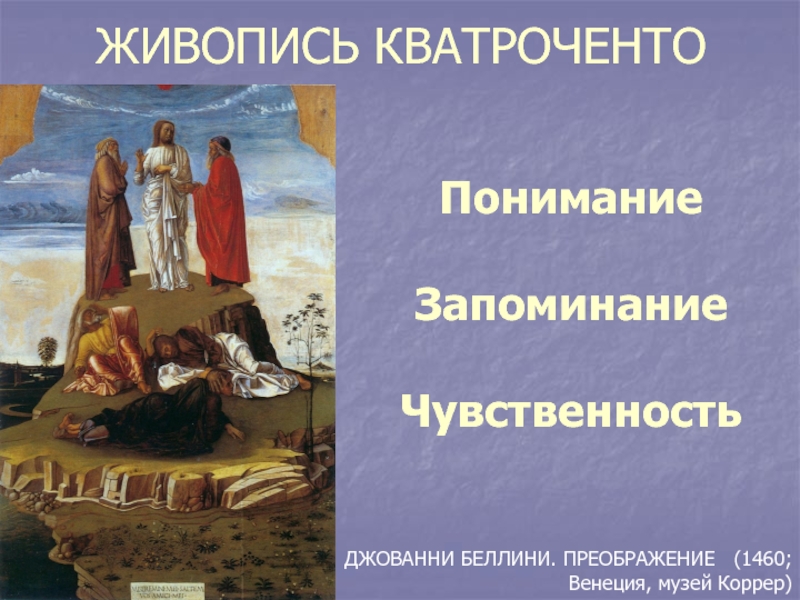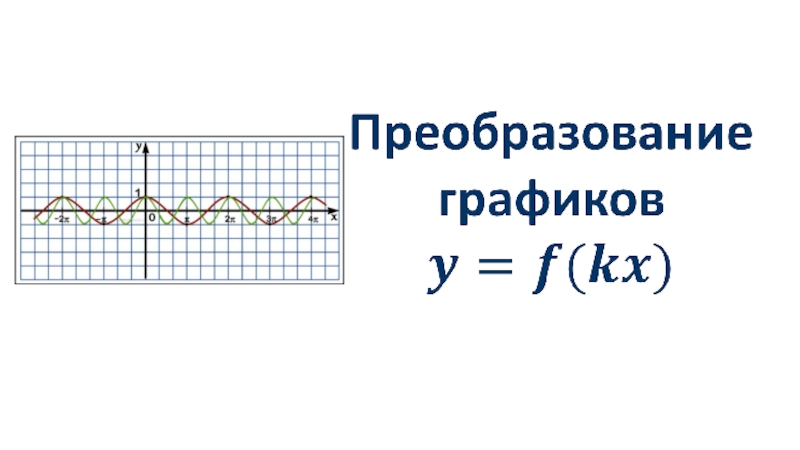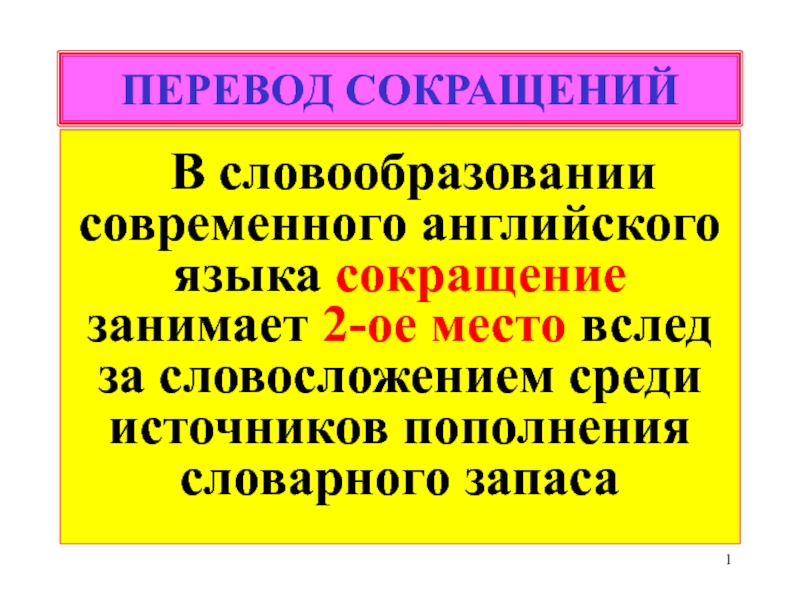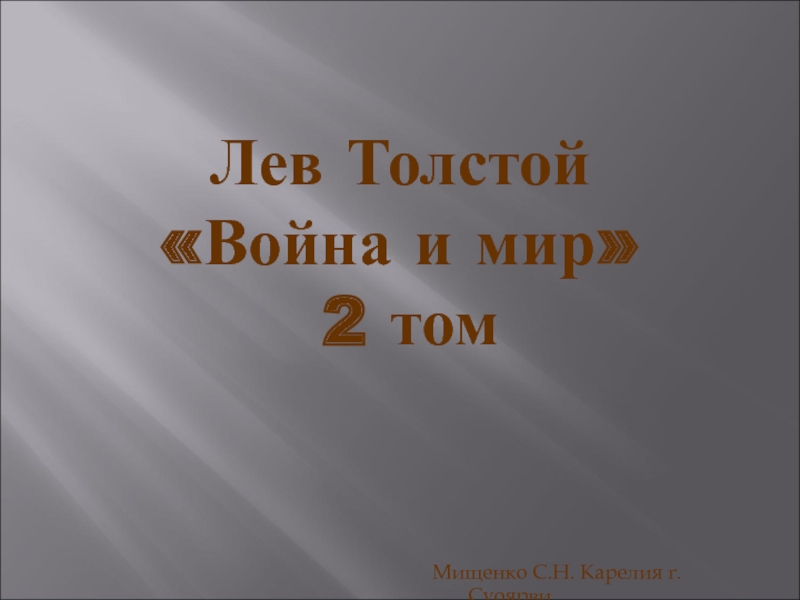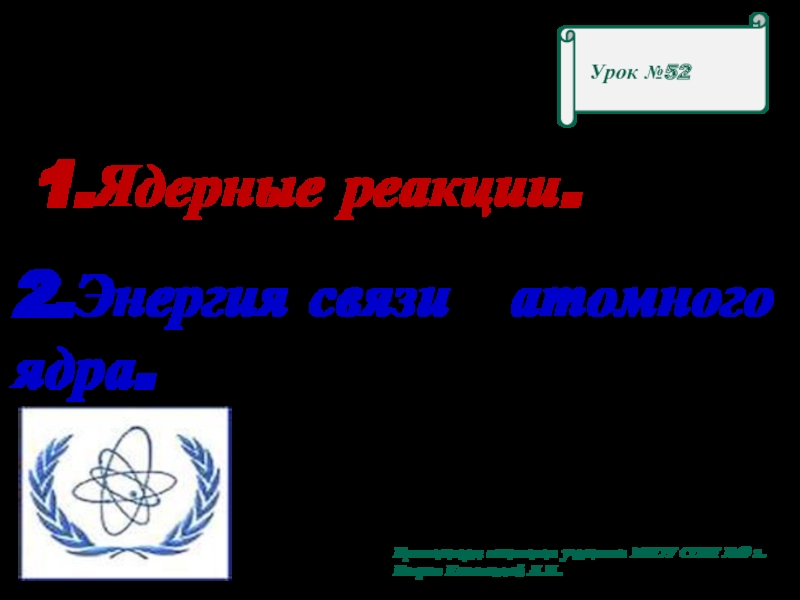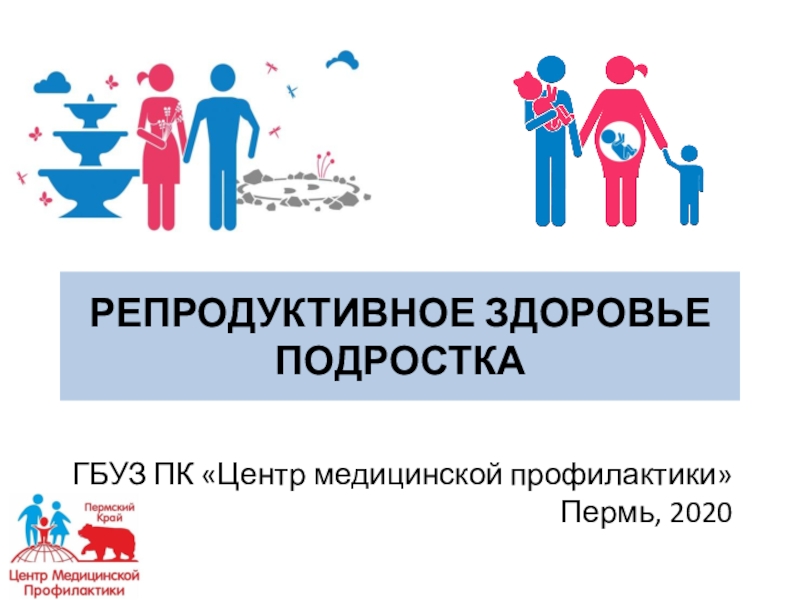Слайд 1APA Style
Mrs. Munko / Mr. Kelly
Слайд 2Learning Objectives
CO2: Select and present information and evidence
Слайд 3Overview
Why APA?
Crediting Sources: What and Why
Formatting In-Text Citations
Formatting Reference Lists
Resources
Слайд 4Why APA?
Different professions use different manuals
Modern Language Association (MLA)
English Studies
Foreign
Language and Literatures
American Psychological Association (APA)
Social Sciences (Psychology, Sociology, Communications,
etc.)
Nursing
Chicago Style
History
Arts
Sciences
Слайд 5What does it mean to credit sources?
Crediting sources gives an
author or resource credit for original information. Crediting sources in
your paper includes two parts:
In-Text Citations: When you present information in the body of your paper, you briefly identify its source.
Reference List: On a separate page at the end of your paper, you write a detailed list of the sources cited in your paper.
The in-text citations and reference list should credit the exact same sources.
Слайд 6Why credit sources?
Acknowledge authors for their ideas
Avoid plagiarism
Increase credibility and
transparency
Join an ongoing academic discussion
Become a part of the academic
community
Слайд 7What should you credit?
Any information that you learned from another
source including facts, statistics, opinions, theories, photographs, and charts
Credit these
sources when you mention their information in any way (quotations, summaries, paraphrases)
EXCEPTION: Information that is common knowledge
Barack Obama is the president of the United States.
The declaration of independence was signed July 4, 1776.
Слайд 8In-Text Citation Format
An in-text citation usually includes the following information:
Author’s
last name (no first name or initial)
Publication date (year only—even
for electronic sources)
Page number (required for quotations; optional for paraphrases)
The rest of the information about the source appears in the reference list.
Слайд 9In-Text Citation Format
Author’s name and publication year at end of
sentence
People with bipolar disorder often have lower wages, higher unemployment,
work absenteeism, reliance on workmen’s compensation, higher rates of divorce, lower levels of educational attainment, higher arrest rates, and hospitalisation (Leahy, 2007).
Author’s name in the sentence immediately followed by year
According to Leahy (2007), people with bipolar disorder often have lower wages, higher unemployment, work absenteeism, reliance on workmen’s compensation, higher rates of divorce, lower levels of educational attainment, higher arrest rates, and hospitalisation.
Слайд 10In-Text Citations with Quotations (under 40 words)
Author’s name, year, and
page number immediately following quotation
Genres are “abstract, socially recognised ways
of using language” (Hyland, 2003, p. 21).
Author’s name in the sentence immediately followed by year
Page number immediately following quotation
According to Hyland (2003), genres are “abstract, socially recognised ways of using language” (p. 21).
Слайд 11Practice!
Author’s last name: Gee
Year of publication: 2005
Page number: 8
Another viewpoint
is that the meaning of language is inherently social.
Another viewpoint
is that “language has meaning only in and through social practices.”
The recent theory that “language has meaning only in and through social practices” lends support for social learning theories.
Gee believes that the meaning of language is inherently social.
Gee’s theory that “language has meaning only in and through social practices” lends support for social learning theories.
Слайд 12Practice!
Author’s last name: Gee
Year of publication: 2005
Page number: 8
Another viewpoint
is that the meaning of language is inherently social (Gee,
2005).
Another viewpoint is that “language has meaning only in and through social practices.”
The recent theory that “language has meaning only in and through social practices” lends support for social learning theories.
Gee believes that the meaning of language is inherently social.
Gee’s theory that “language has meaning only in and through social practices” lends support for social learning theories.
Слайд 13Practice!
Author’s last name: Gee
Year of publication: 2005
Page number: 8
Another viewpoint
is that the meaning of language is inherently social (Gee,
2005).
Another viewpoint is that “language has meaning only in and through social practices” (Gee, 2005, p. 8).
The recent theory that “language has meaning only in and through social practices” lends support for social learning theories.
Gee believes that the meaning of language is inherently social.
Gee’s theory that “language has meaning only in and through social practices” lends support for social learning theories.
Слайд 14Practice!
Author’s last name: Gee
Year of publication: 2005
Page number: 8
Another viewpoint
is that the meaning of language is inherently social (Gee,
2005).
Another viewpoint is that “language has meaning only in and through social practices” (Gee, 2005, p. 8).
The recent theory that “language has meaning only in and through social practices” (Gee, 2005, p. 8) lends support for social learning theories.
Gee believes that the meaning of language is inherently social.
Gee’s theory that “language has meaning only in and through social practices” lends support for social learning theories.
Слайд 15Practice!
Author’s last name: Gee
Year of publication: 2005
Page number: 8
Another viewpoint
is that the meaning of language is inherently social (Gee,
2005).
Another viewpoint is that “language has meaning only in and through social practices” (Gee, 2005, p. 8).
The recent theory that “language has meaning only in and through social practices” (Gee, 2005, p. 8) lends support for social learning theories.
Gee (2005) believes that the meaning of language is inherently social.
Gee’s theory that “language has meaning only in and through social practices” lends support for social learning theories.
Слайд 16Practice!
Author’s last name: Gee
Year of publication: 2005
Page number: 8
Another viewpoint
is that the meaning of language is inherently social (Gee,
2005).
Another viewpoint is that “language has meaning only in and through social practices” (Gee, 2005, p. 8).
The recent theory that “language has meaning only in and through social practices” (Gee, 2005, p. 8) lends support for social learning theories.
Gee (2005) believes that the meaning of language is inherently social.
Gee’s theory that (2005) “language has meaning only in and through social practices” (p. 8) lends support for social learning theories.


